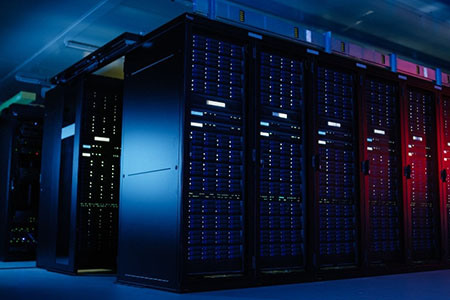When selecting a video storage server configuration, several factors need to be considered, including the number of video streams, resolution, storage duration, data transfer rate, and whether real-time processing is required. Here are some suggestions to help you choose the right server configuration for video storage:
1. Storage capacity:
Number and resolution of video streams: Determine the storage capacity based on the number of cameras that need to be stored and the resolution of each camera. High-resolution and high-frame-rate cameras produce larger data streams.
Storage duration: Determine how long the video needs to be retained. Choose the appropriate hard drive capacity based on your storage needs.
2. Hard drive type:
Speed and stability: Use a high-speed, stable hard drive, such as a solid-state drive (SSD) or a hard drive specially designed for video surveillance, to ensure sufficient read and write speeds.
RAID configuration: Consider using a RAID configuration to increase data redundancy and fault tolerance.
3. Processor and memory:
Real-time processing requirements: If you need to perform real-time video processing, analysis or compression on the server, choose a powerful multi-core processor and sufficient memory.
Streaming: If there are multiple concurrent video streams to process, make sure the processor and memory are sufficient to support the load.

4. Network bandwidth:
Upload and download speed: Make sure the server has sufficient upload and download bandwidth to support real-time streaming and data retrieval.
Network stability: For video surveillance, network stability is crucial to ensure that the server is connected to a reliable network.
5. Graphics processing unit (GPU):
Video analysis: If you need to perform video analysis, intelligent detection or deep learning tasks, consider choosing a server with a GPU to accelerate processing.
6. Operating system and software:
Operating system selection: Choose the operating system that suits your application and device, usually Linux or Windows Server.
Video management software: Choose management software for video surveillance to effectively manage and retrieve stored video.
7. Data backup and recovery:
Regular backup: Set up a regular data backup plan to ensure the security and recoverability of video data.
Disaster recovery plan: Develop a disaster recovery plan to deal with hardware failure or other emergencies.
8. Security:
Data encryption: Ensure data is encrypted during storage and transmission to protect privacy and security.
Access control: Set strict access control to only allow authorized personnel to access stored video data.
9. Remote access:
Remote monitoring: If you need to monitor and access video data remotely, make sure the server configuration supports remote access and management.
Depending on the specific video surveillance needs and application scenarios, the above factors may require different degrees of trade-offs. It is recommended to conduct a thorough needs analysis and consider future scalability before choosing.






